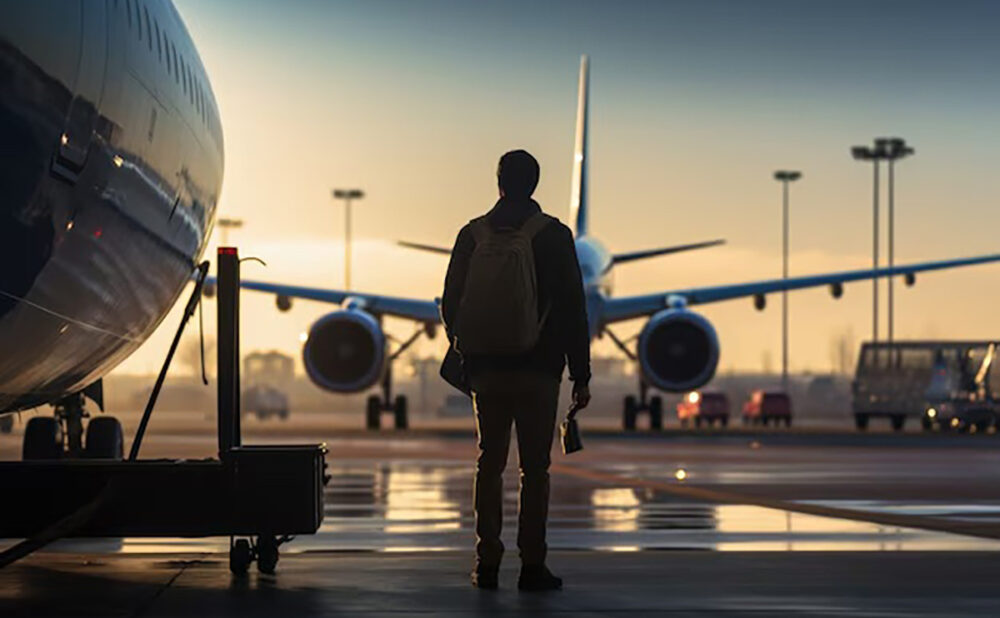Why Flying is the Safest Way to Travel
The debate over whether flying is safer than driving is a common topic, particularly among those who experience anxiety related to air travel. It’s often stated that flying is statistically safer than driving, with the most perilous aspect of a flight being the journey to the airport. Safety remains a paramount concern for travelers around the globe. Personal experiences and cultural narratives can influence the perception of risk. However, statistical data provides a more objective way to assess the relative safety of flying versus driving. While statistical data can shed light on this issue, comparing the safety of these two modes of transportation can be complex, akin to comparing apples to oranges.
Introduction to the Safety Comparisons Between Flying and Driving
In this article, we will examine accident rates, injury statistics, and the common causes of incidents in both aviation and road traffic. Additionally, we will consider the factors contributing to the safety of each mode, including regulatory frameworks, technological advancements, and environmental influences. Furthermore, we will address the psychological aspects that shape public perception of safety. Ultimately, this analysis aims to clarify misconceptions and provide a comprehensive overview of travel safety. We’ll equip readers with the information needed to make informed choices about their preferred mode of transportation.
Injured in an Aviation Accident? Contact Us For A Free Consultation
Injured in an Aviation Accident?

Taking to the Skies — One of the Safest Ways to Travel
Airplane travel remains one of the safest modes of transportation for several reasons, even in light of recent crashes. Here are some key factors that contribute to its safety:
- Stringent Regulations. The aviation industry is heavily regulated by national and international bodies such as the Federal Aviation Administration (FAA) and the International Civil Aviation Organization (ICAO). These regulations ensure high standards for aircraft design, maintenance, and operation.
- Advanced Technology. Modern aircraft are equipped with sophisticated technology that enhances safety, including advanced navigation systems, collision avoidance systems, and improved communication tools. These technologies help reduce the likelihood of human error and mechanical failure.
- Pilot Training. Pilots undergo rigorous training and continuous education to handle various scenarios, including emergencies. Pilots train in simulators that replicate real-life situations, which prepares them to respond effectively under pressure.
- Maintenance Protocols. Strict protocols are followed for aircraft maintenance. Regular inspections and maintenance checks ensure that all aircraft components are functioning properly.
Additional Safety Protocols for Commercial Aviation
- Statistical Safety. Despite a few high-profile crashes, the overall statistics show that commercial aviation is incredibly safe. The number of accidents per mile traveled is significantly lower than that of other forms of transportation, such as cars or trains.
- Incident Investigation. When accidents do occur, they are thoroughly investigated by agencies like the National Transportation Safety Board (NTSB). The findings lead to improvements in safety protocols and practices, preventing similar incidents in the future.
- Public Awareness and Response. Increased awareness of aviation safety issues has led to better responses and preparedness among airlines and regulatory bodies. This proactive approach helps to mitigate risks and enhance overall safety.
- Global Collaboration. The aviation industry benefits from global collaboration among airlines, manufacturers, and regulatory agencies, which share information and best practices to improve safety standards worldwide.
While recent crashes can raise concerns, the overall framework of safety in aviation continues to make it one of the safest modes of transportation available.
Driving vs Flying: A Statistical Overview
When evaluating the safety of different modes of transportation, it is essential to rely on empirical data. When examining the statistics alone, it becomes apparent that air travel is significantly safer than driving. This section provides a comprehensive statistical overview comparing the safety of flying and driving. We’ll focus on accident rates, injury and fatality statistics, and common causes of accidents for both travel methods.
Accident Rates in Aviation vs Road Traffic
Statistically, aviation is considered one of the safest modes of transportation. According to the National Highway Traffic Safety Administration (NHTSA), the odds of dying in a car accident are approximately 1 in 107, while the odds of dying in a plane crash are about 1 in 11 million. The International Air Transport Association reports that in 2021, there was only one crash for every 7.7 million flights. The overall risk of fatality while flying stands at just 0.23%. To put it in perspective, an individual would need to take flights daily for over 10,000 years to statistically face a fatal plane crash.
In recent years, commercial aviation has reported an average of only 0.07 fatal accidents per one million flights, compared to road traffic, which sees tens of thousands of fatalities annually. In the United States alone, there are over 38,000 deaths from car-related incidents each year, highlighting the stark contrast in safety between these modes of travel. These figures suggest a significantly higher risk associated with car travel when compared to air travel. However, it is essential to consider the context behind these statistics.
Injury and Fatality Statistics
In addition to accident rates, the severity of injuries and fatalities also presents a compelling comparison. In aviation, serious injuries are relatively rare, with most passengers experiencing only minor discomfort during turbulence or other in-flight events. Conversely, road traffic accidents frequently result in severe injuries or fatalities due to high-speed collisions, which can lead to traumatic injuries, long-term disabilities, and loss of life. The World Health Organization (WHO) estimates that road traffic injuries are the leading cause of death for individuals aged 5-29, while aviation-related fatalities account for a fraction of this number, even when considering the vast number of flights that occur globally.
Analysis of Common Causes of Accidents in Both Modes
Understanding the common causes of accidents in both aviation and road traffic further illustrates the differences in safety. In aviation, human error, mechanical failure, and adverse weather conditions are the primary contributors to accidents. However, the rigorous training and stringent regulations governing pilots and flight operations have significantly mitigated these risks over time.
In contrast, the leading causes of road accidents include distracted driving, speeding, driving under the influence, and poor weather conditions. Despite advancements in vehicle safety technology, such as anti-lock braking systems and airbags, human factors continue to play a pivotal role in road safety. Unlike commercial pilots, who undergo extensive training and continuous education, many drivers receive minimal instruction and may not be adequately prepared to handle emergency situations.
In summary, the statistical overview of travel safety reveals that flying is statistically safer than driving, with lower accident rates, fewer fatalities, and a different set of contributing factors to accidents for each mode of transportation. These statistics lay the groundwork for understanding the broader implications of travel safety as we explore its influencing factors in the next section.

Enhanced Regulation of Aircraft Compared to Passenger Vehicles
When comparing the safety of flying and driving, it is essential to consider the various factors that contribute to the overall safety of each mode of transportation. These factors encompass pilot training and regulations, vehicle safety features and regulations, and environmental influences that can affect safety outcomes.
One significant factor contributing to the safety of air travel is the extensive regulation of the aviation industry. The majority of air travel statistics pertain to commercial flights governed by federal regulations, specifically 14 CFR Part 121. These laws impose strict safety measures on commercial airlines, much like those applicable to the trucking industry.
Pilots face limitations regarding their flying hours, and aircraft must adhere to rigorous safety inspections. Given these high standards, it is unsurprising that airplane accidents are rare. Private vehicle safety regulations are often less stringent than those governing public transportation. Some states may not require vehicle inspections for registration, highlighting the disparity in safety oversight between the two modes of transport.
Pilot Training and Regulations
One of the most significant factors in ensuring the safety of air travel is the rigorous training and certification process that pilots undergo. Commercial pilots must complete extensive training, which includes both theoretical knowledge and practical experience. This training covers a wide range of topics, including emergency procedures, navigation, and systems management. Additionally, pilots must accumulate a substantial number of flight hours before they can operate commercial flights, often exceeding 1,500 hours for airline transport pilots in the United States.
Regulatory bodies such as the Federal Aviation Administration (FAA) impose strict guidelines and regular assessments to ensure that pilots maintain their skills and knowledge. These regulations extend to aircraft maintenance protocols, requiring regular inspections and adherence to safety standards. Such stringent requirements help mitigate human error, which is a leading cause of aviation accidents.
What Types of Aircraft Pose Greater Risks?
While commercial flights boast impressive safety records, it is crucial to note that a substantial number of aviation fatalities occur in different types of aircraft, particularly:
- General aviation aircraft
- Planes with a capacity of 20 or more
- Commuter or on-demand aircraft, including air taxis
These classifications of aircraft are subject to less stringent safety regulations compared to commercial airlines. This includes charter and private flights, as well as smaller, privately owned planes. The reduced regulatory framework means that the risks associated with pilot fatigue and maintenance issues are notably higher.
This disparity in regulation helps explain why accidents involving larger commercial airplanes are rare despite the high volume of such flights conducted annually in the United States.
Vehicle Safety Features and Regulations
In contrast, while drivers also face regulations, the level of training and certification required is far less stringent. Most drivers need only to pass a driving test and obtain a license. However, advancements in vehicle safety technology have significantly improved road safety over the years. Manufacturers equip modern vehicles with anti-lock braking systems (ABS), electronic stability control, and advanced airbag systems, which enhance passenger safety.
Furthermore, the National Highway Traffic Safety Administration (NHTSA) enforces regulations governing vehicle manufacturing and safety standards. These regulations aim to ensure that vehicles meet specific safety criteria before they can be sold to the public. Despite this, the sheer number of vehicles on the road, combined with the variability in driver behavior, means that the risk of accidents remains high.
Environmental Factors Affecting Safety
Environmental conditions also play a critical role in the safety of both flying and driving. For aviation, factors such as weather conditions, air traffic control systems, and the geographical layout of flight paths can all impact safety. Pilots must be adept at making quick decisions based on changing weather patterns, such as thunderstorms or fog, which can affect visibility and flight operations.
On the other hand, driving is heavily influenced by road conditions, traffic density, and the behavior of other drivers. Factors like poor weather (rain, snow, ice), road construction, and even wildlife can contribute to accidents. The unpredictability of these variables can make driving inherently riskier, as drivers must react to a multitude of external factors that can change rapidly.
Pilots’ training, vehicle safety advancements, and environmental conditions all influence the safety of flying versus driving. Understanding these contributing factors is crucial for a comprehensive assessment of travel safety, as they provide insight into the mechanisms that help prevent accidents and protect passengers in both modes of transportation.


GEORGIA AIRPLANE ACCIDENT LAWYER NEAR ME
Public Perception and Psychological Factors
The perception of safety in flying versus driving is heavily influenced by psychological factors, which can often diverge sharply from statistical realities. While data may suggest that flying is statistically safer than driving, individual fears and societal narratives can shape attitudes towards each mode of transportation.
Fear of Flying vs Fear of Driving
Fear of flying, known as aviophobia, affects a significant portion of the population. This fear can stem from various sources, including the dramatic portrayal of aviation accidents in movies and media, which can create an inflated sense of risk. Despite the low incidence of plane crashes relative to car accidents, the catastrophic nature of an aviation disaster leads to a heightened emotional response. Most people experience anxiety while driving, especially in heavy traffic or adverse weather conditions. The frequency of road travel contributes to a sense of control, which can mitigate fear.
Media Influence on Perception of Safety
The media plays a significant role in shaping these perceptions, frequently highlighting airplane accidents while underreporting the far more frequent and often more deadly road traffic incidents. This skewed portrayal can lead to a misinformed public that may overestimate the risks of air travel while downplaying the dangers of driving.
Behavioral Differences in Risk Assessment
Individuals tend to assess risk based on personal experiences and societal narratives rather than statistical facts. For example, someone who has had a negative experience while flying—such as turbulence or a delay—may develop a lasting fear of air travel, despite the objective safety of flying. Additionally, those who engage in daily driving may underestimate the inherent risks, including distractions, intoxication, and reckless behavior. This disparity in risk assessment highlights the psychological biases that influence how people perceive safety in transportation. Factors such as overconfidence in one’s driving abilities can lead to a minimization of the dangers associated with road travel, while the perceived vulnerability of being a passenger in an aircraft can amplify fears about flying.
In summary, public perception of safety in flying versus driving is shaped by fear, media influence, and individual risk assessment. These psychological factors often lead to a skewed understanding of actual safety statistics, emphasizing the importance of addressing these perceptions to foster a more balanced view of the risks associated with both modes of transportation.
Conclusion: Is Flying Safer than Driving?
For those prioritizing safe travel options, commercial airlines represent the safest choice to reach your destination. In contrast, flying in private or chartered aircraft may introduce a higher degree of risk.
Driving, regardless of the terrain—be it highways or rural roads—remains the most dangerous transportation method. Numerous factors contribute to the dangers of driving, including distracted driving, adverse weather conditions, and poor road maintenance, which collectively render car travel significantly more hazardous than flying.
Ultimately, while both flying and driving come with risks, the clear evidence indicates that flying is the safer option for travel. As travelers, making informed decisions based on factual data rather than fear can lead to a more positive experience and a greater appreciation for the safety measures in place within the aviation industry.
Reach Out to The Jewkes Law Firm
If you or a loved one find yourselves in the unfortunate situation of being involved in an accident, whether by air or road, seeking legal counsel can be crucial. A personal injury lawyer can assist in securing the necessary compensation for damages incurred.
For more information regarding personal injury claims and your rights following an accident, please reach out to The Jewkes Firm at (770) 771-5130 to arrange a complimentary case evaluation today. Your safety and welfare are our highest priorities.





